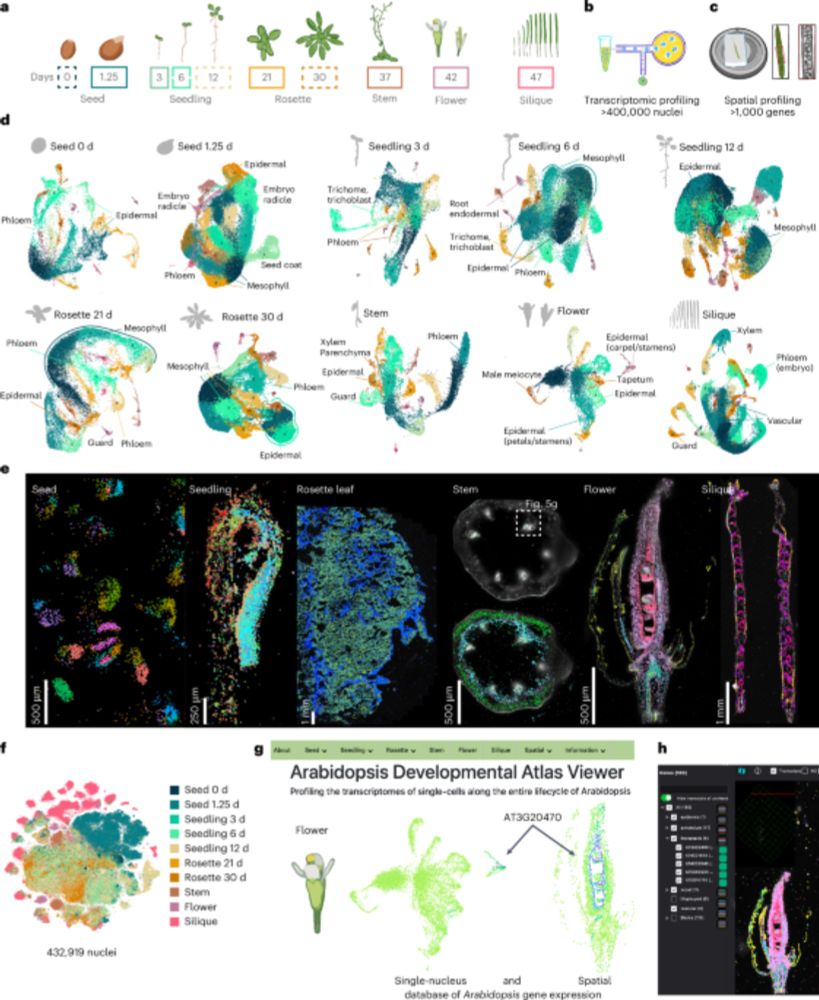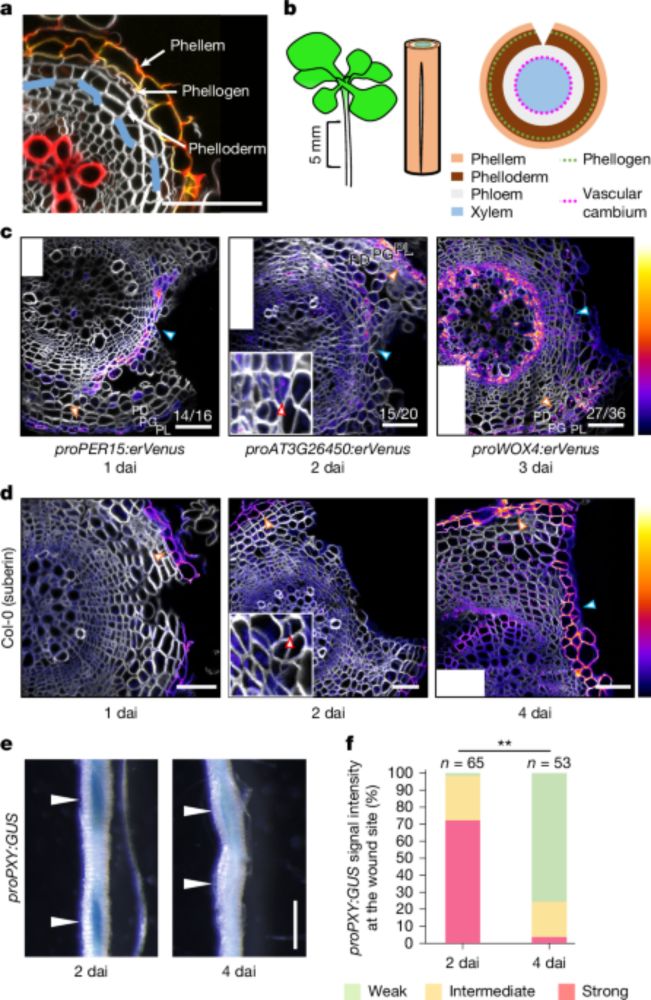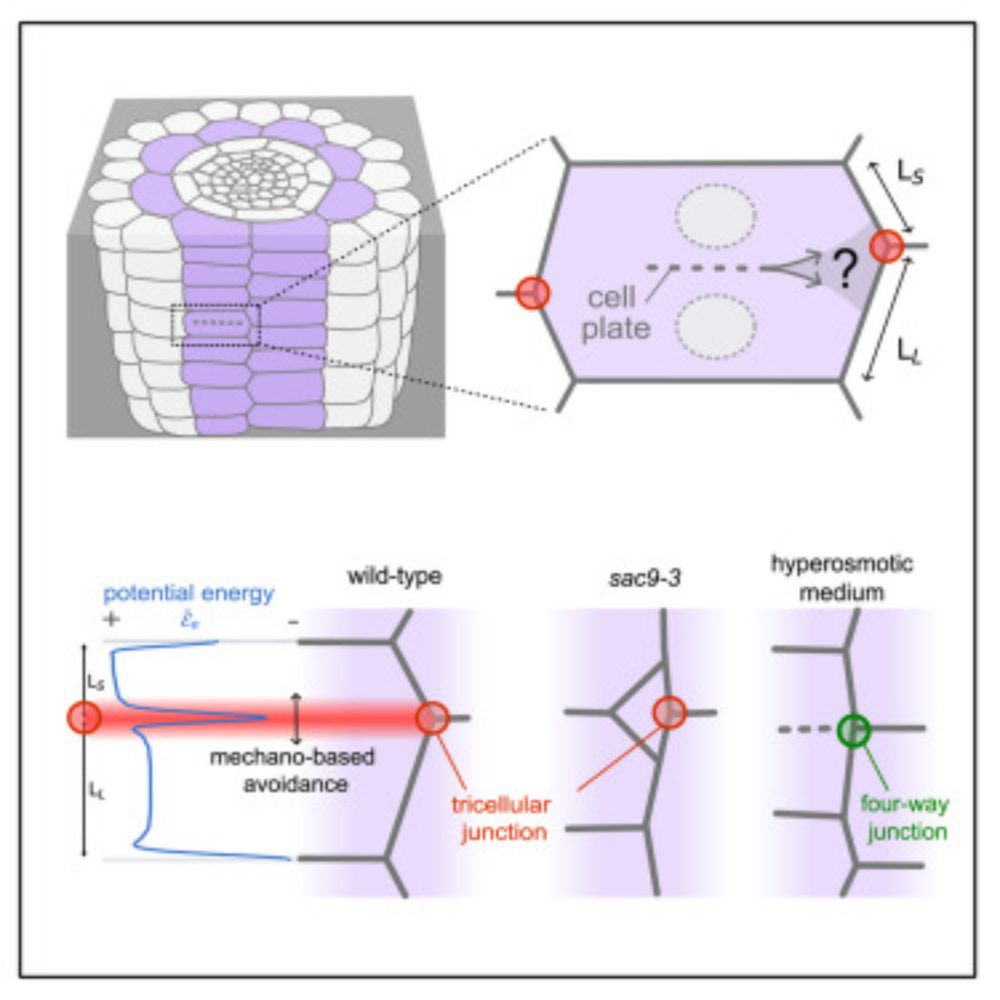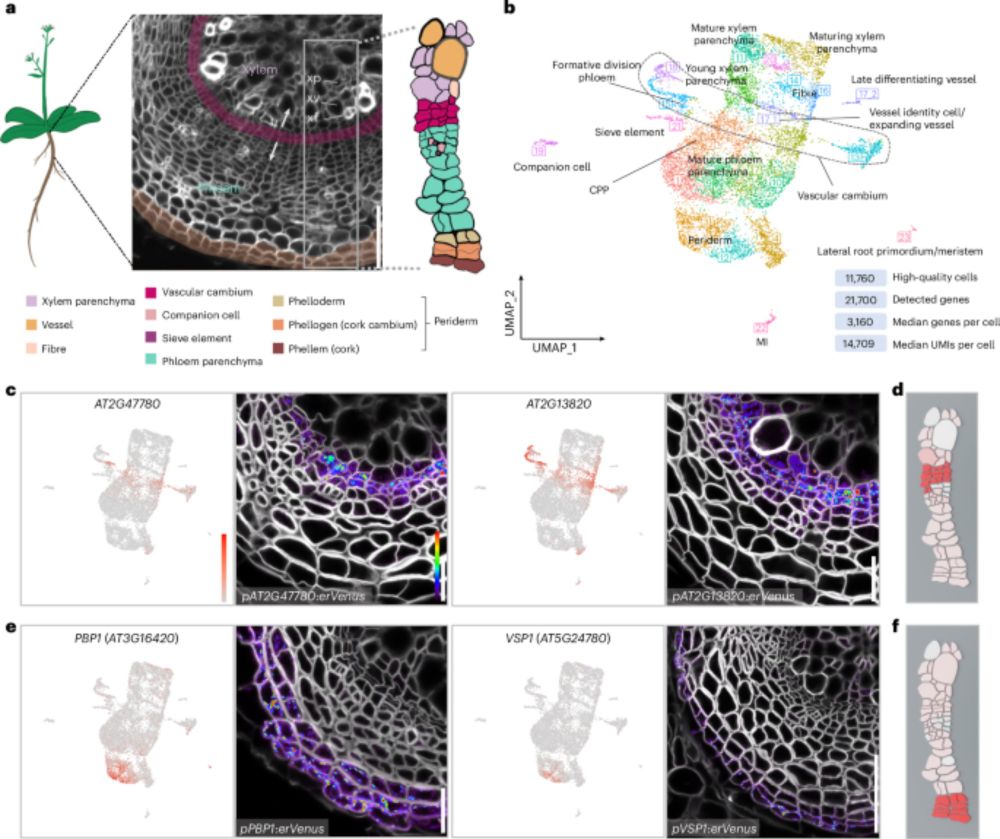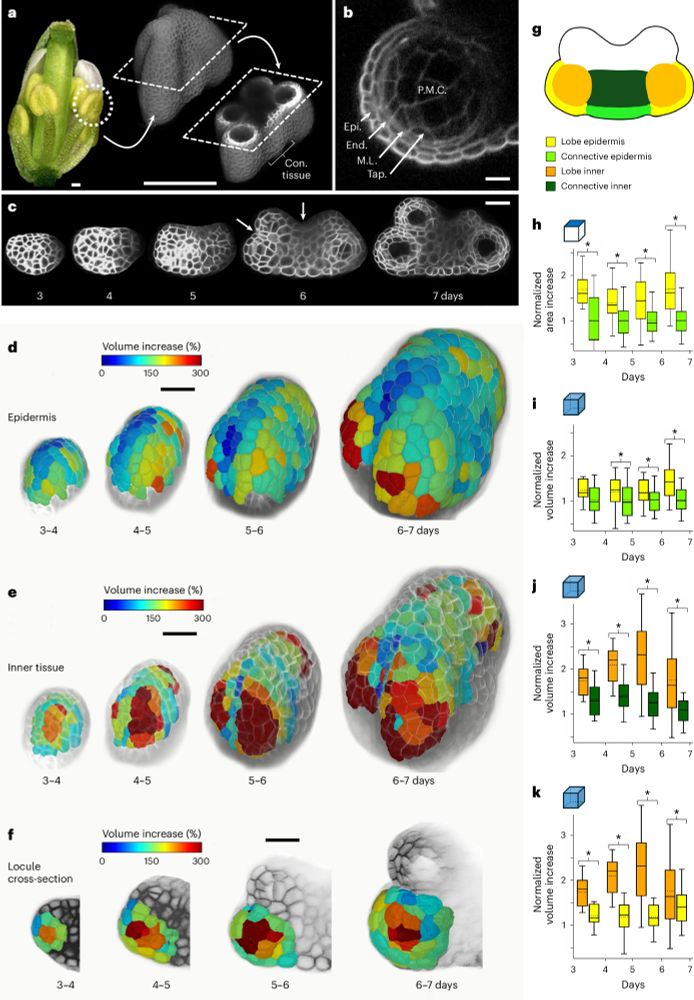Lab is expanding to a new horizon of imaging!
I am extremely proud of my grad student @juliazheku.bsky.social Julia to take a lead on our new Vibratome and create this GORGEOUS 3D image of the radial section of wheat root.
03.10.2025 16:16 — 👍 19 🔁 2 💬 1 📌 0

NEW ARTICLE FROM THE LAB 🎉🍀🧫
Groundbreaking work performed by @hueihsuantsai.bsky.social and all!
Please, go have a read! Congrats to making it to the cover!!!
www.science.org/doi/10.1126/...
02.10.2025 18:09 — 👍 42 🔁 20 💬 2 📌 0
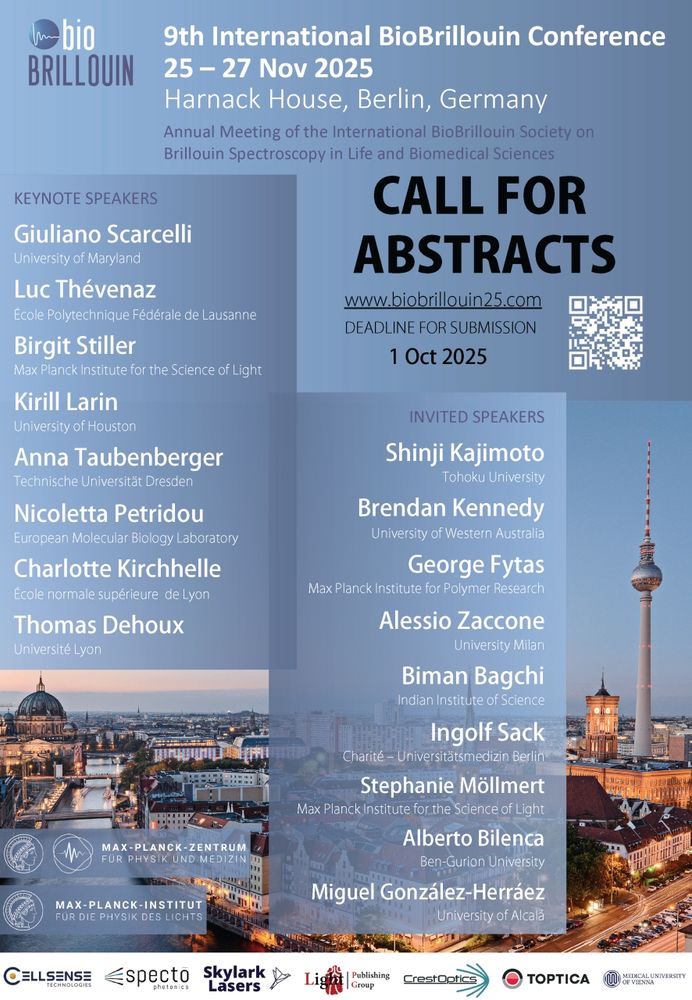
Don't forget to submit your abstract until October 1, 2025 to join this amazing lineup of speakers at the 9th International BioBrillouin Conference from Nov 25-27 in Berlin! Looking forward to seeing you there 🤩
12.09.2025 20:56 — 👍 2 🔁 3 💬 0 📌 1

JXB EDITORIAL
INTERNSHIPS 2026
"My JXB internship was an excel-lent opportunity to gain first-hand experience of the editorial and publishing process."
Sujit Jung Karki, University
College Dublin, JXB intern 2024 19
"I had the opportunity to publish an Insight article as the sole author, which was something I did not expect to be able to achieve at this early point in my career."
Katie Watson,
University of Hong Kong,
JXB intern 2025
"Being an editorial intern has been an enriching and formative
experience."
Luis Alonso Baez,
Norwegian University of Science and Technology, JXB intern 2025
Apply by
30th September 2025
bit.ly/jxbinterns
💡 Did you know the JXB Editorial Internships call is now open? 💡
This is the 4th round of our internship programme 🌱
Check out what past interns had to say about their experience 👩💻
Deadline: 30 Sept
👉 bit.ly/jxbinterns?ut...
#PlantScience 🧪
12.09.2025 12:09 — 👍 5 🔁 7 💬 1 📌 0
Dual role of the receptor kinase FERONIA in regulating tissue mechanics and growth https://www.biorxiv.org/content/10.1101/2025.08.28.672783v1
29.08.2025 14:03 — 👍 6 🔁 1 💬 0 📌 0
9th International BioBrillouin Conference
‼️Abstract submissions is open for the 9th International BioBrillouin Meeting (biobrillouin25.com) that will take place at the Max Planck Society Conference House in Berlin, Germany on the November 25-27, 2025.
Deadline for abstract submission: October 1, 2025
#BioBrillouin
13.08.2025 07:30 — 👍 0 🔁 2 💬 0 📌 1

Excited for the @faseborg.bsky.social's upcoming #PlantDevelopment conference in Massachusetts? #PDevSRC
To complement the meeting, we've curated a collection of review-type and Research Articles on this topic:
journals.biologists.com/dev/collecti...
06.08.2025 10:05 — 👍 7 🔁 5 💬 1 📌 1
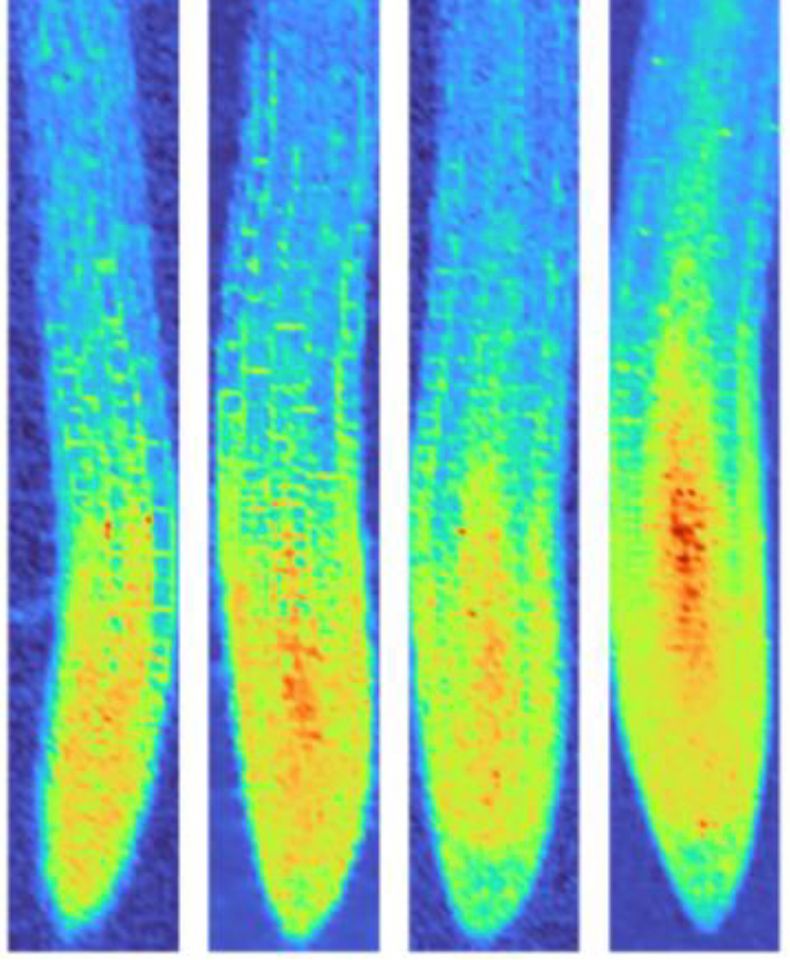
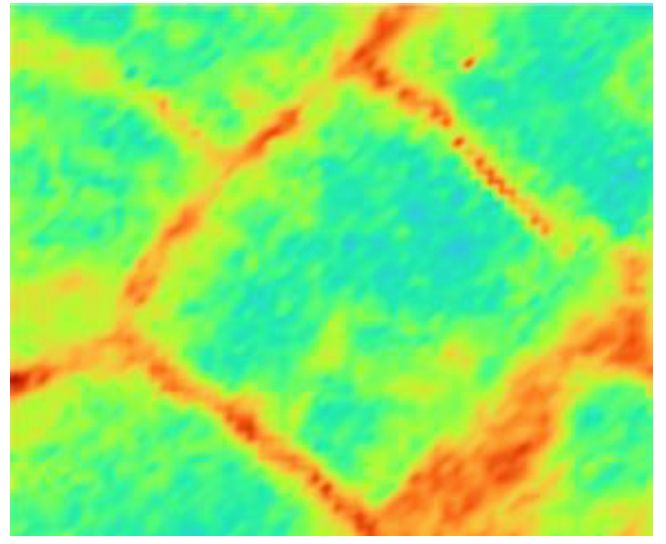
One of the key aspects influencing morphogenesis is mechanics. We mapped the mechanical properties of living roots at the tissue and cellular levels using Brillouin microscopy and molecular rotors.
www.biorxiv.org/content/10.1...
01.08.2025 16:29 — 👍 41 🔁 17 💬 0 📌 0
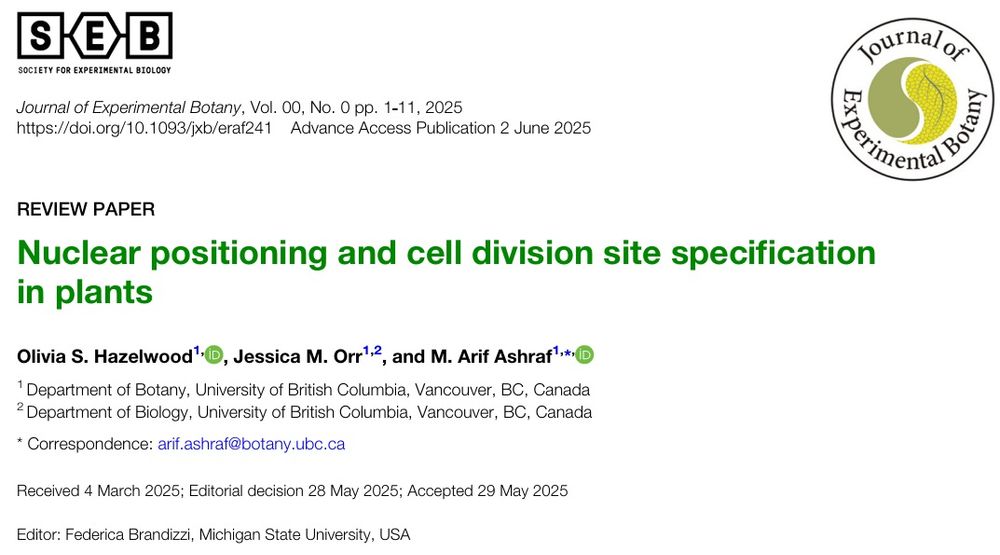
(1/10) I am excited to share this signature review from our lab published @jxbotany.bsky.social
Congratulations to @ohazel.bsky.social and @jessicaa-orr.bsky.social (first published paper for Jessica!)
Nuclear positioning and cell division site specification in plants
doi.org/10.1093/jxb/...
22.07.2025 23:40 — 👍 22 🔁 9 💬 1 📌 0
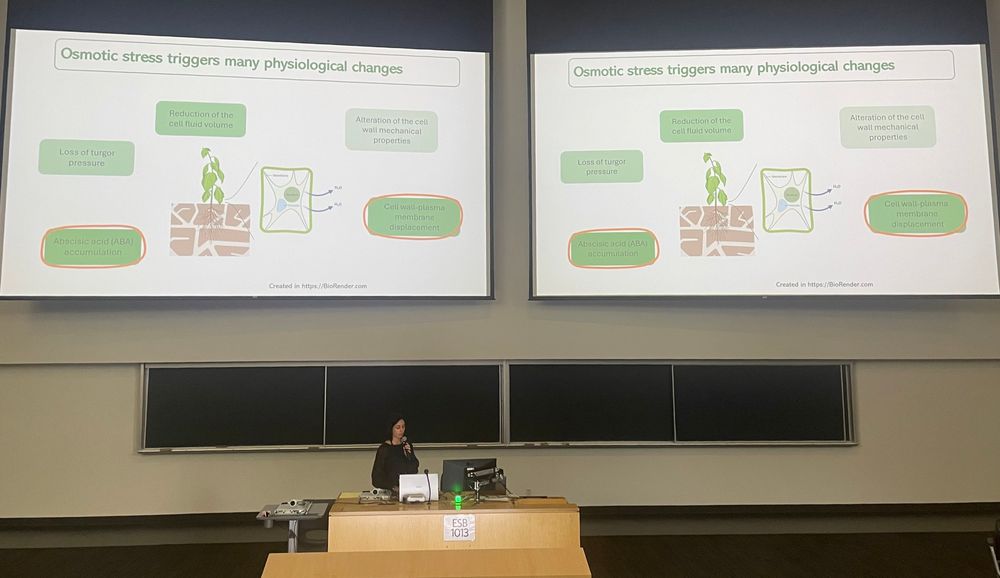
@sara-morghen.bsky.social giving a great talk about her PhD project involving ABA and mechanics at #PlantCellWallMeeting2025 in Vancouver. @hydrosensing.bsky.social
10.07.2025 18:25 — 👍 8 🔁 4 💬 0 📌 0
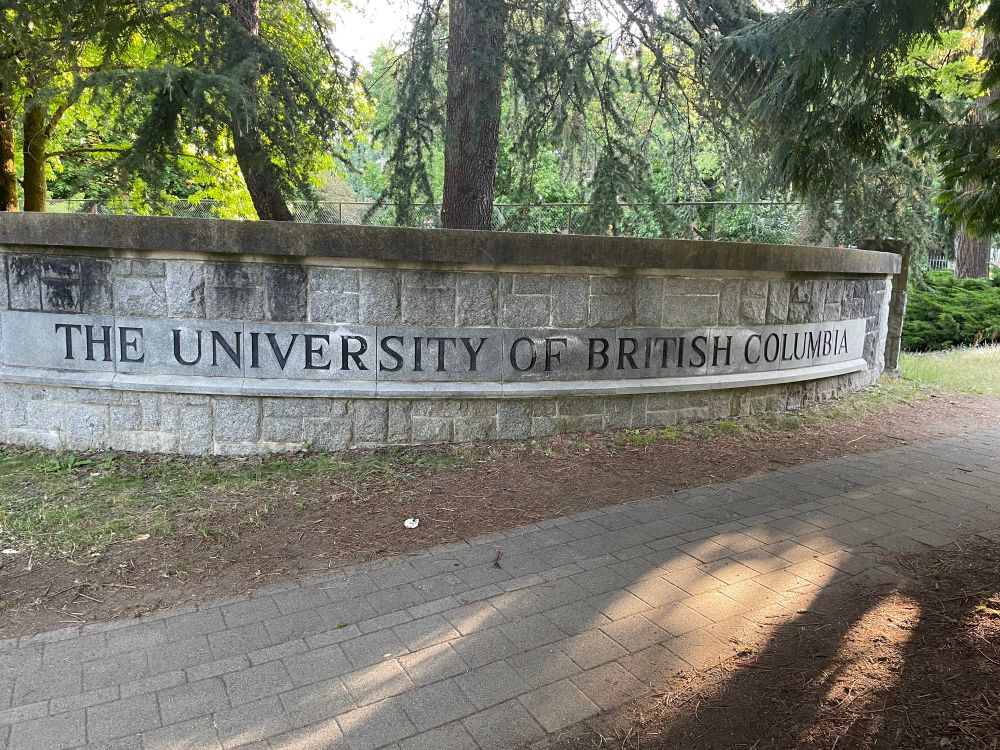
Arrived together with @sara-morghen.bsky.social to the beautiful UBC campus in Vancouver for the Plant Cell Wall Conference 2025. Ready to discuss the relation between cell walls, water sensing, abscisic acid and mechanobiology. @hydrosensing.bsky.social #plantcellwalls
04.07.2025 14:57 — 👍 11 🔁 4 💬 0 📌 0
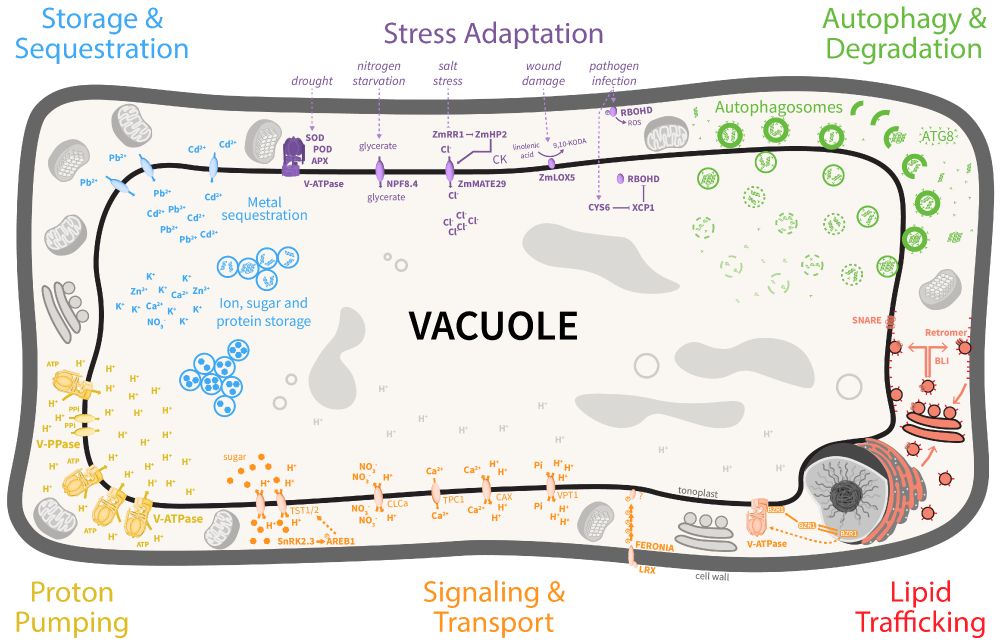
Think vacuoles are just plant cell dumpsters? Think again.
They sense. They signal. They reshape. They fight back! ⚔️
Vacuoles are emerging as central hubs for plant resilience and adaptation. 🌱
@plantophagy.bsky.social and I unpack it all in our new review. Check it out!
🔗 doi.org/10.1016/j.pb...
02.07.2025 08:14 — 👍 39 🔁 18 💬 2 📌 0
Stomatal transpiration and rapid programmed cell death ☠️ triggered by lowered ambient humidity causes anther tissue collapse for effective pollen release !
Happy to be part of this great PNAS story with @kampova.bsky.social, Matyáš Fendrych, and @svosolsobe.bsky.social! www.pnas.org/doi/10.1073/...
22.05.2025 07:46 — 👍 140 🔁 47 💬 3 📌 7
Imaging of specialized plant cell walls by improved cryo-CLEM and cryo-electron tomography https://www.biorxiv.org/content/10.1101/2025.06.01.657137v1
03.06.2025 23:04 — 👍 9 🔁 2 💬 0 📌 3

Epidermal cells acquire different cell shapes to enable their functions and maintain tissue integrity in plants. Meristematic cells differentiate and expand into diverse mature cell types, including jigsaw puzzle-shaped pavement cells (a), round stomatal guard cells (b), elongated epidermal cells in hypocotyls and the apical hook (c), and root epidermal cells with root hairs (d). The spatial distribution and arrangement of cell wall polysaccharides, such as cellulose microfibrils, xyloglucans, and pectins (e.g., homogalacturonan represent as HG), and the abundance of methylester groups on these components in differentiating cells regulate anisotropy during cell growth, enabling the acquisition of specific cell shapes. In addition, proteins like KATANIN and CLASP reorient dynamically the cortical microtubules. These cortical microtubules rearrangement is in response to mechanical cues, either self-generated (as in b, c) or from neighboring cells (a, c), leading to the resulting cell shape.
Attribution-NonCommercial-NoDerivatives 4.0 International

Auxin controls cell expansion by regulating cell wall biosynthesis and cell remodeling. Auxin promotes cell expansion by acidifying the cell wall and activating wall synthesis and loosening enzymes. Auxin efflux (PINs) and influx (AUX1) transporters establish concentration gradients in growing tissue. Auxin enters cells via influx transporters and activates the TRANSPORT INHIBITOR RESPONSE 1/AUXIN SIGNALING F-BOX PROTEINS-AUXIN/INDOLE ACETIC ACID (TIR1/AFB-Aux/IAA) nuclear signaling cascade, which regulates auxin-responsive genes, including AUXIN RESPONSE FACTORs (ARFs) and SMALL AUXIN UP RNAs (SAURs). Auxin activates the H+-ATPase proton pump through TRANSMEMBRANE KINASE 1 (TMK1), acidifying the cell wall and triggering loosening enzymes including PECTIN METHYLESTERASEs (PMEs), EXPANSINs, and XYLOGLUCAN:XYLOGLUCOSYL TRANSFERASEs (EXTs). Cellulose microfibrils are synthesized by the plasma membrane-bound cellulose synthase complex (CSC), with cortical microtubules guiding the exocytosis of this complex toward expanding cell edges. Auxin coordinates the reorientation of cortical microtubules and actin filaments to regulate the trafficking of cell wall polysaccharides to ensure proper cell wall expansion and specific cell shape acquisition.
Attribution-NonCommercial-NoDerivatives 4.0 International
🌱🧩 How do plant cells get their shape? 🧪
Check out the new #open-access #review exploring the mechanochemical duet between auxin & the cell wall in shaping diverse plant cell types from @srobertgroup.bsky.social's Lab.
🔗 doi.org/10.1111/ppl....
#PlantBiology #CellShape #Auxin #Biomechanics
30.05.2025 08:28 — 👍 27 🔁 11 💬 0 📌 1
#PDevSRC is back for 2025! The premier platform for experts in plant developmental biology to collaborate will welcome keynotes Siobhan Brady and Niko Geldner. Check out the video and view the full agenda: buff.ly/FD5WJgb
22.05.2025 15:05 — 👍 6 🔁 7 💬 0 📌 1

Cuscuta crawling over a hapless plant. The sickly yellow threads of the parasite are wrapped around the green of the victim like a thick spider's web.
How do parasitic plants find their prey? New study shows dodder vines use touch sensitivity and light detection to hunt victims. These master grafters even attempt to parasitize metal objects.
Learn more: wp.me/pdRZhH-m3g
#Botany #PlantScience 🧪
23.05.2025 19:30 — 👍 45 🔁 16 💬 0 📌 1
The Cell Wall Controls Stem Cell Fate in the Arabidopsis Shoot Apical Meristem https://www.biorxiv.org/content/10.1101/2025.05.19.654883v1
20.05.2025 04:03 — 👍 25 🔁 17 💬 0 📌 1

Schematic representation of a longitudinal section of the juvenile root meristem and the regulatory networks controlling changes in division orientation. In the epidermis/lateral root cap (LRC), the SMB–FEZ pathway is responsible for regulating the division guiding changes in division orientation that generate the epidermis and LRC. In the ground tissue, the SHR–SCR module guides the changes in division orientation that generate the cortex and endodermal tissues. In the vascular tissue, the TMO5/LHW–DOF2.1 module and, more specifically in the phloem, PEAR transcription factors, drive oriented divisions that regulate vascular proliferation. Inset: developmental trajectories for the various cell types found in the root meristem, beginning from the quiescent centre (QC) in the centre and ending outermost with the final forms.
🧬🌱 EXPERT VIEW 🌱🧬
'Intrinsic cues guiding changes in division orientation in the Arabidopsis root meristem: a formative experience' - Konstantinova et al. doi.org/10.1093/jxb/...
#PlantScience 🧪
06.05.2025 11:55 — 👍 33 🔁 12 💬 0 📌 0
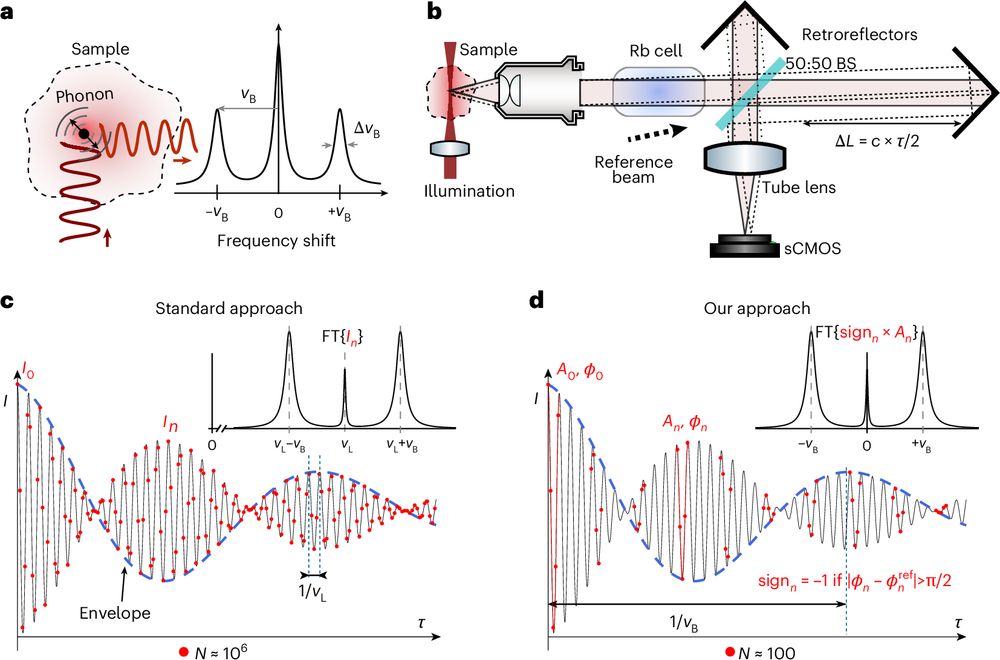
Full-field Brillouin microscopy based on an imaging Fourier-transform spectrometer
Nature Photonics - A Fourier-transform imaging spectrometer enables two-dimensional spectral Brillouin imaging at a throughput of up to 40,000 spectra per second over a...
Thrilled and proud about our latest advancement in Brillouin microscopy - enabling true light-sheet like mechanical imaging at high throughput. Out today in @naturephotonics.bsky.social
Congratulations Carlo! @carlobevilacqua.bsky.social
rdcu.be/eaDiX
20.02.2025 20:00 — 👍 39 🔁 10 💬 0 📌 0

Home
This site contains the complete version of the Fiji Training Manual that is written and maintained by Cameron Nowell of the Monash Institue of Pharmaceutical Science.
This manual is provided under the...
Answering the call of @haesleinhuepf.bsky.social, Christian Tischer, Pete Bankhead, @kbias.bsky.social @bethcimini.bsky.social
My Fiji training notes are now FAIR. All online in an open format to download and use for teaching and training. All in Google Doc or PDF formats
bit.ly/4hkfEBF
05.02.2025 22:57 — 👍 65 🔁 28 💬 3 📌 2
Plant and animal biomechanics, functional morphology, and biomimetics. Highlights from the Botanical Garden of the TU Darmstadt.
We are an independent, international centre of excellence in plant science, genetics and microbiology.
www.jic.ac.uk
The Bio-Analytic Resource encompasses more than 200 databases of plant genomic data (for transcriptome data, protein-protein and protein-DNA interactions, protein 3D structures, variation and more) with numerous tools for data visualization, e.g. ePlants!
Cell biologist driven by a passion for cell division
Biophysicist | tissue mechanics | @MPI_Light | mom of 2 | she/her
PhD student @rdplab.bsky.social • Plant cell wall • Cell anisotropic growth • Microscopy
Mexican Historian & Philosopher of Biology • Postdoctoral Fellow at @theramseylab.bsky.social (@clpskuleuven.bsky.social) • Book Reviews Editor for @jgps.bsky.social • #PhilSci #HistSci #philsky • Escribo y edito • https://www.alejandrofabregastejeda.com
Assist Prof at UIUC Plant Bio #NewPI. NSF Postdoc UConn EEB. PhD Harvard OEB. Erasmus MEME evobio alumna. She/Her. Lover of ALL plants.
🧪🔬🌱🌾
Development; Evolution; Evo-Devo; Microscopy; Meristems.
Lived in 🇨🇳🇯🇵🇸🇪🇫🇷🇩🇪🇺🇸
www.minyaaa.com
Postdoc in #LeiboffLab at OSU 🇺🇸 studying maize leaf veins | Fascinated by Plant anatomy ➕Plant development
Red sea pedestrian.
Herchel Smith Postdoctoral Fellow @slcuplants.bsky.social 🌱
Plant biologist interested in development and evolution 🌱👩🔬🔬 Looking at roots' edges at RDP Lab in Lyon 🇨🇵. Previously looking at moss at Uni of Bristol 🇬🇧. Italian 🇮🇹🇪🇺 Books, cats and hikes. She/her
Plant cell biologist, PI @ IPSIM, Montpellier France
Four research groups (Robert, Novak, Kleine-Vehn and Jones) working together to understand the development of plants.
Post-doc at UIUC studying stomatal patterning. Botanist by training with interests broadly in evo-devo, mechanistic modeling, and genetics, particularly in relation to grasses and cereals. Opinions my own.
Postdoc, Plant nutrient and root development, Suberin plasticity, Natural variations, @University of Geneva, https://www.unige.ch/barberonlab/
Keen to nature, hiking, skiing
Cell biologist 🔬
Research fellow, University of Exeter
https://experts.exeter.ac.uk/42742-alex-johnson
The International BioBrillouin society represents the community of scientists interested in Brillouin Light Scattering Spectroscopy in biology and medicine.
Developing innovative & sustainable crops with leading-edge plant breeding methods in more than 70 countries worldwide.
Tradition of family ownership and independence for nearly 170 years.
🔗 www.kws.com
Plant cell/developmental biologist @RDP Lyon, loves cell edges, mechanics, and lateral roots
MPG group leader and AvH fellow with interests in development, physiology and CLSM. I need to know how 🌱 communicate with environment. privately: huge cat-fan









